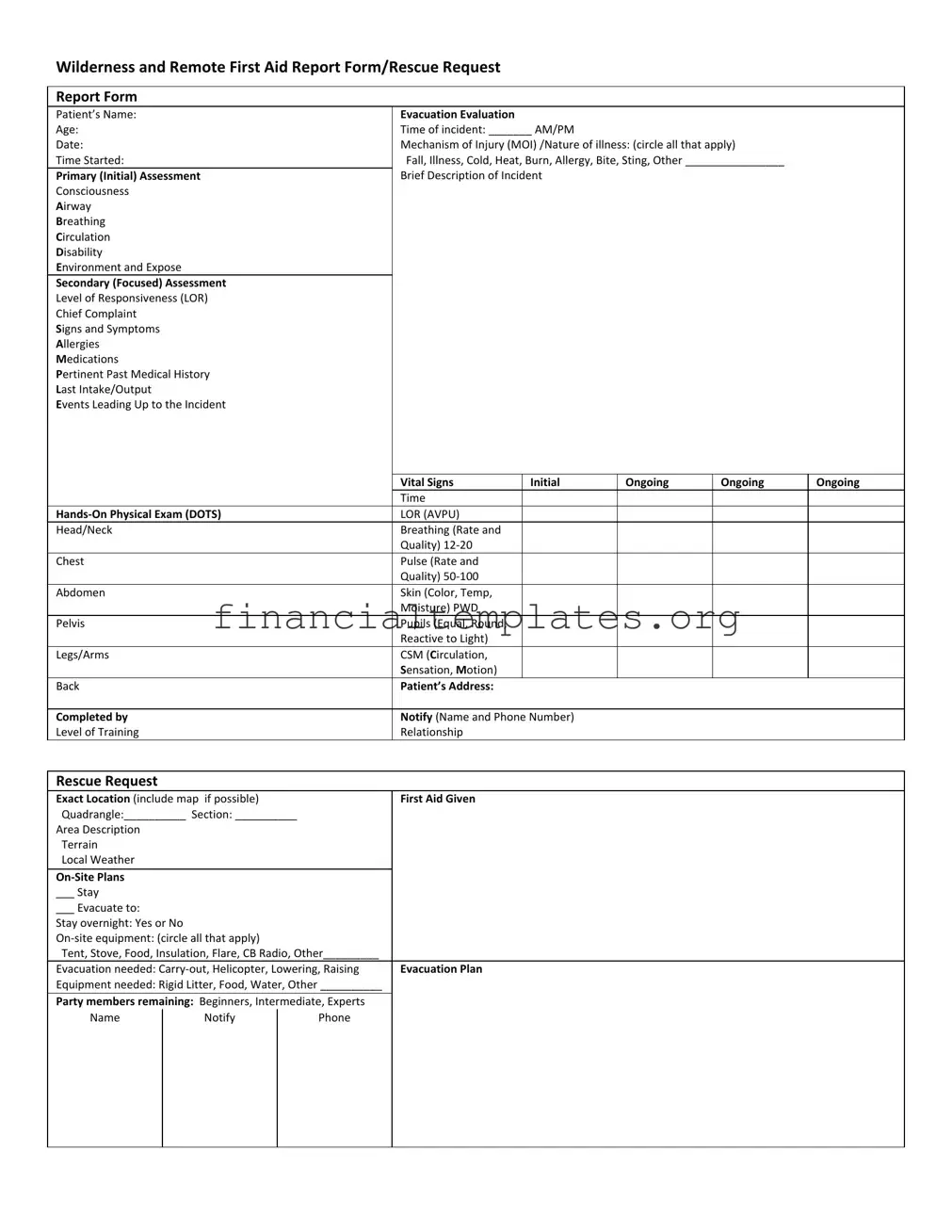The Wilderness First Aid Report form shares similarities with an Incident Report form commonly used within organizations to record details about workplace accidents or incidents. Both forms document precise details about what happened, including the time and date of the incident, a description of the incident, and any immediate actions taken. The focus on capturing a clear, chronological account of events, with attention to environmental conditions and the actions of individuals involved, makes these documents closely aligned in purpose and structure.
Similar to a Medical Record form used in healthcare settings, the Wilderness First Aid Report captures detailed patient information, including medical history, allergies, medications, and a log of symptoms and vital signs over time. This parallel is evident in their mutual aim to track the patient's condition and treatment comprehensively, ensuring that any healthcare provider who later reviews the form can understand the patient's medical journey from the onset of the condition through subsequent care.
Emergency Action Plan documents, designed to outline steps to take in response to various emergencies, share the Wilderness First Aid Report's aim to prepare and guide actions in critical situations. Both types of documents include specific plans for evacuation, details on the equipment and resources needed, and contact information for key individuals or organizations, facilitating a coordinated response to emergencies.
The Wilderness First Aid Report has similarities with a Risk Assessment form, particularly in the sections that evaluate and plan for evacuation. Both forms involve analyzing potential hazards—whether environmental conditions or the health risk to an individual—and determining the necessary steps to mitigate these risks. This shared focus on identifying and responding to potential dangers underscores their importance in safety and emergency preparedness.
The Patient Transfer Form, used when a patient is moved from one healthcare setting to another, parallels the Wilderness First Aid Report form in its function of providing a comprehensive handoff that includes medical history, current condition, and the specific care provided. Both ensure that the receiving party has all the necessary information to continue appropriate care without interruption, emphasizing the continuity of care even in different settings.
A Search and Rescue (SAR) Operation Report, which is utilized during search and rescue missions, shares commonalities with the Wilderness First Aid Report in terms of detailing the incident's location, conditions, and the resources required for the rescue. Both documents are crucial for planning and executing a response operation, including the coordination of equipment and personnel to ensure the operation's success.
Finally, the Hiking or Expedition Plan, prepared by adventurers before embarking on outdoor activities, is akin to the Wilderness First Aid Report in its anticipation and preparation for potential emergencies. While the Plan outlines intended routes, expected weather, and safety measures, the First Aid Report documents actual incidents and responses, reflecting two sides of the same coin in terms of wilderness safety and preparedness.

